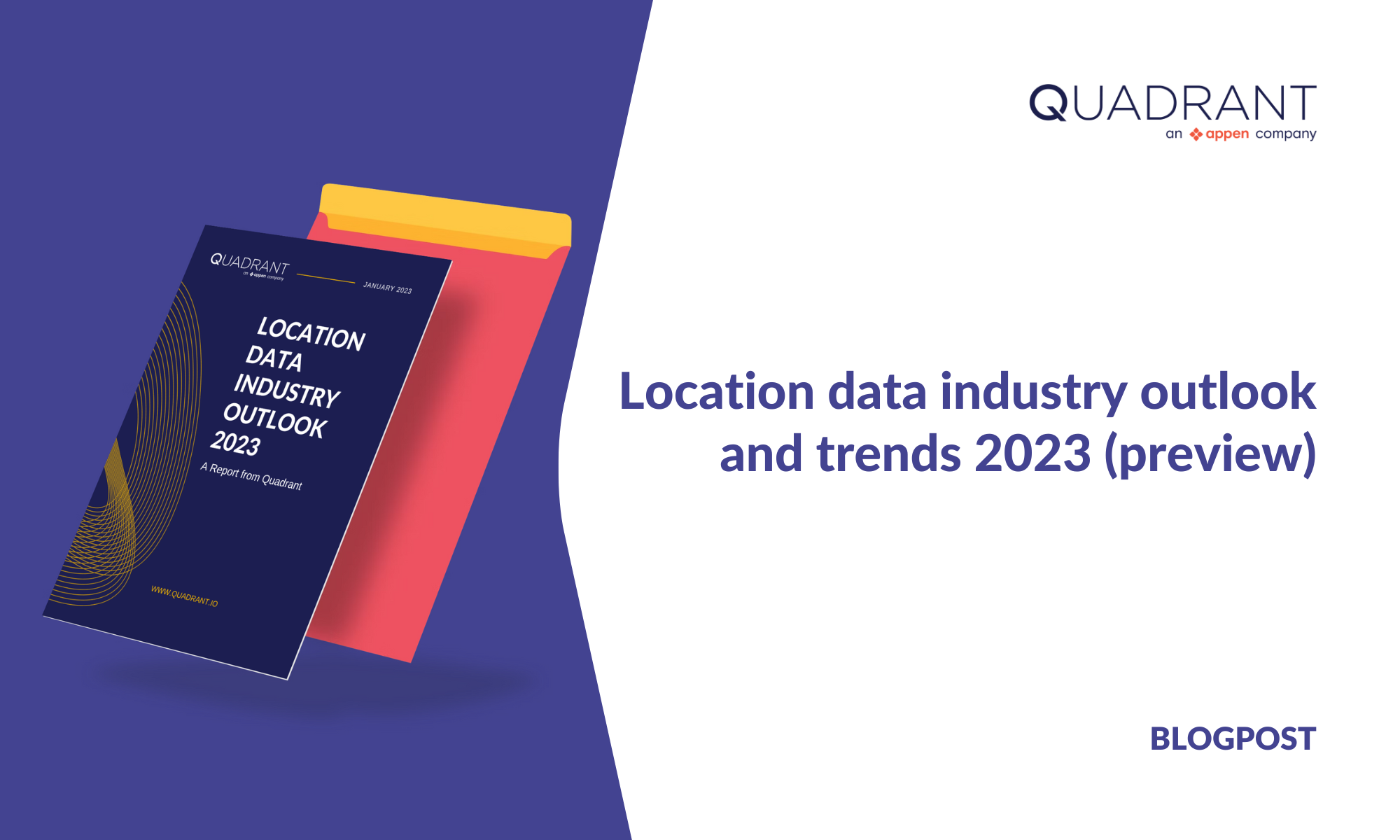Geospatial data – specifically mobile location and Points-of-Interest (POI) data - is a powerful resource that enables everyday location-based services such as ride-hailing, food delivery, logistics, etc. Location data analyses have been proven to optimize commercial operations, identify high-impact public investments, improve our ability to respond to and prepare for natural disasters, and more.
The location data industry is extremely dynamic because of several reasons, including new policies from dominant OS providers, data-privacy regulations, the ongoing transformation of cities and movement patterns, etc. As it continues to expand and evolve, businesses that utilize geospatial data (as well as those that supply it) must stay up to date with the ever-changing landscape to maintain a competitive edge.
Based on our expertise and success with many leading companies across the world, we have authored a report that details the themes and trends we believe will mold the industry in 2023 and beyond.
Building recent and relevant maps will be key for location based services
Digital maps often contain outdated information as they cannot keep up with changes in the real world, causing inconvenience for users and lost revenue for businesses. The Covid-19 pandemic has exacerbated this problem as many businesses have closed or moved online. Rebuilding these maps and enriching them with contextual attributes will be critical for location based businesses to improve user experience and operational efficiency.
Most companies use popular digital maps and open-source platforms as base maps for their platforms. However, as the need for context and more granular attributes becomes more critical, we'll see a twofold shift in the industry 1) popular digital maps will add more custom attributes to their database and 2) companies will procure or build their own custom maps to serve their unique use case. Businesses will also need to closely observe refresh rates as POI data gets outdated frequently.
Data compliance will be a priority
2023 will be a year of greater accountability, transparent business practices, and dedicated consent management systems. Enhanced security and compliance mechanisms will be a determining factor of success for location data providers. Businesses that handle location data collection transparently and securely will gain a competitive advantage as privacy protection becomes increasingly important to both data buyers and end users.
Location data for AI, BI and Augmented and Virtual Reality
Investment in AI technologies will surge in 2023 as more industries adopt them for mainstream applications and services. Geospatial data will play a vital role in providing real-world context for AI-powered services to function adequately.
In 2023, POI data will be in high demand because it provides contextually rich information that enhances the user experience on AR and VR platforms. As inputs for automated business intelligence services, both mobile location and POI data will provide firms with current insights on evolving consumer behavior and trends - thereby enabling product development, successful expansion plans, and more.
In our report, we take a deeper dive into these trends and more themes for 2023. Whether you are a business leader, marketer, data scientist, analyst, or data vendor, this report will give you a broad overview of what to expect in 2023. As a result, you will be in a better position to adapt to and thrive in this rapidly evolving industry.





